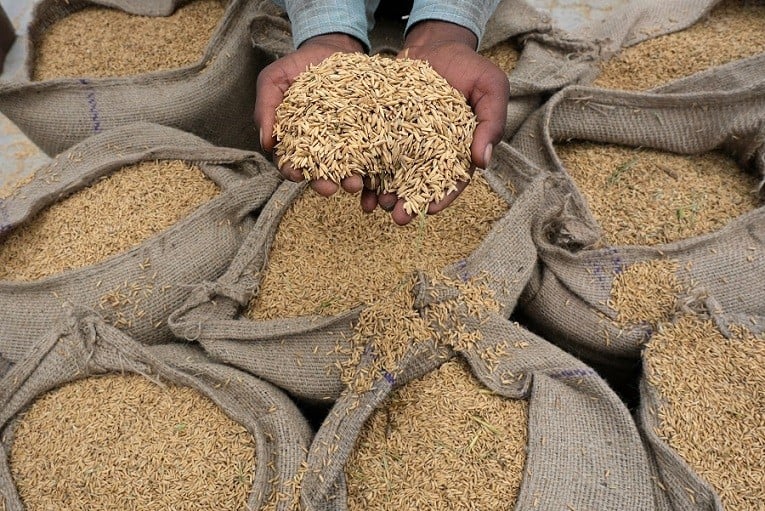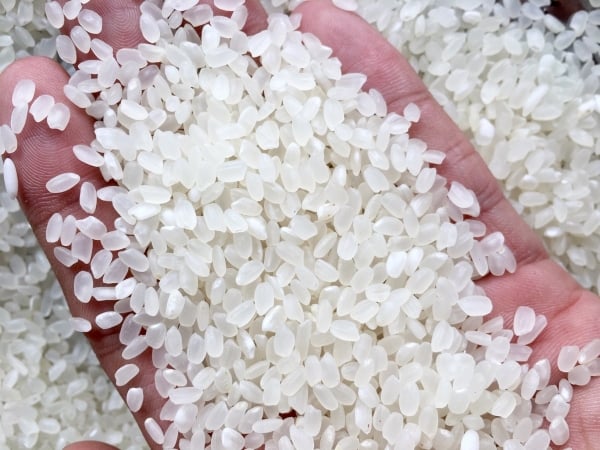 |
| With the latest tariffs, Indian parboiled rice will become as expensive as rice from Thailand and Pakistan. (Source: Bloomberg) |
The decision was announced by the Indian Finance Ministry on the evening of August 25 to control rising prices while ensuring adequate supplies for the domestic market. With this new measure, India has now imposed export restrictions on all non-basmati rice varieties, which account for 25% of the country's total rice exports.
The imposition of a 20% tariff on parboiled rice exports could push the price of this type of rice even higher on the world market. Parboiled rice is a type of rice in which the paddy is soaked in hot water before being processed.
The earlier ban on exports of all rice except basmati prompted some buyers to increase purchases of parboiled rice and push prices of the grain to a record high, a Mumbai-based dealer said.
With the latest tariffs, Indian parboiled rice will become as expensive as rice from Thailand and Pakistan. Buyers now have little choice.
Global rice prices have started to stabilize in the past few days after rising more than 25% due to India’s export restrictions last month. However, prices are expected to rise again after the move, a Mumbai-based dealer pointed out.
The UN Food and Agriculture Organization's rice price index rose to its highest level in nearly 12 years in July 2023, as prices in major rice exporting countries surged on strong demand after India imposed export restrictions.
Vietnam’s 5% broken rice prices were quoted at $650-660 per ton on August 24, up from $660 a week earlier. Meanwhile, Thailand’s 5% broken rice export prices also rose to $630 a ton from $615-620 a week earlier.
Prices of agricultural products in futures contracts on the Chicago Mercantile Exchange (USA) moved in opposite directions in the last trading session of the week, with corn and wheat prices falling while soybeans rose.
At the close of the session, corn for December 2023 delivery fell 0.25 US cents (0.05%) to $4.88/bushel. Wheat for December 2023 delivery fell 10 US cents (1.58%) to $6.2175/bushel. In contrast, soybeans for November 2023 delivery rose slightly by 16 US cents (1.17%) to $13.8775/bushel (1 bushel of wheat/soybean = 27.2 kg; 1 bushel of corn = 25.4 kg).
Observers said wheat futures fell as the dollar strengthened. On the other hand, U.S. and global agricultural markets remained high as they awaited the Pro Farmer survey report, the most thorough and closely watched report on potential yields at a crucial time of the season.
The risk of the national average soybean yield falling to or below 50 bushels per acre and corn yield falling to 170-173 bushels per acre is growing, with Chicago-based agricultural market research firm AgResource recommending traders buy on a correction in prices over the next 10 days.
Source



![[Photo] Closing of the 11th Conference of the 13th Central Committee of the Communist Party of Vietnam](https://vstatic.vietnam.vn/vietnam/resource/IMAGE/2025/4/12/114b57fe6e9b4814a5ddfacf6dfe5b7f)



![[Photo] Overcoming all difficulties, speeding up construction progress of Hoa Binh Hydropower Plant Expansion Project](https://vstatic.vietnam.vn/vietnam/resource/IMAGE/2025/4/12/bff04b551e98484c84d74c8faa3526e0)


























































































Comment (0)